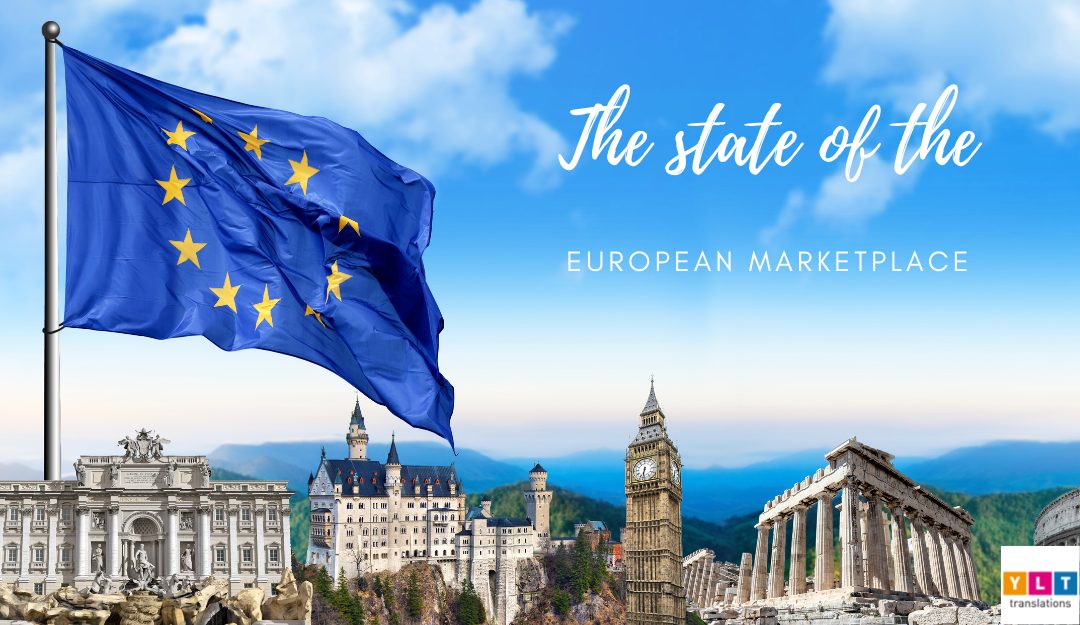The numbers are clear: the European marketplace sector is poised for massive growth. It amassed €200bn since 2020, with continuous growth projected for the years to come. This is no small feat; Europe is made of 50 distinct countries, with more than 200 languages spoken, and 28 different currencies. All of these people have many differences, but one thing is clear – they are driven by convenience. European ECommerce has boomed, especially during the pandemic, with the majority of activity taking place in marketplaces in the UK, Germany, and France. Let’s take a look at the contributing factors to European marketplace ecommerce, and what this may herald for the years ahead.
What Are the Major Players?
In the next 5 years, third-party online marketplaces will make a massive contribution to total online global sales by 2027. Four sites take the lion’s share:
- Amazon, which reported €51,322 million at the end of 2021;
- Alibaba;
- Pinduoduo;
- JD.com
A close fifth runner-up is Walmart, which is scaling up operations and digital presence very quickly.
The European marketplace market contributes half of all ecommerce sales in the continent. This year, it looks like it’ll double its performance from 2020. However, this isn’t an even playing ground; different cultures experience different absorption rates for eCommerce.
Top Players
- In the UK, marketplace sales contribute 64% of total ecommerce sales
- In Spain, Italy, and Poland, marketplace sales contribute around 50% of total ecommerce sales per country
Where Non-Marketplace Sites Do Better
- Greeks do not shop on marketplaces; sales contribute less than 1% of total ecommerce sales
- Czechia, Denmark, Finland, Greece, Norway, Sweden, and Slovakia are similarly low in marketplace adoption; local players seem to be doing better
Keep an Eye on Poland
Poland’s home-grown marketplace, Allegro, has seen massive improvement since launching in 1999. It reported €1.14bn total revenue in 2021, and has around 22 million unique customers per month.
International vs. Local Marketplaces
International marketplaces – AliExpress, Amazon, eBay, Etsy, and Zalando – do very well in Europe. Amazon and eBay lead the pack in revenue, with many big-name brands selling alongside smaller contributors. Given that 15% of Europeans buy online from another country, and only 7% of small to medium enterprises sell cross-border, these numbers are a welcome indication of growth.
Local marketplaces include OTTO, Allegro, and Bol.com – local players that make marketplace penetration a challenge. These homegrown sites, often in the language spoken by the country they reside in, understand their customers very well. They provide the exact product mix, marketed to the distinct flavor preferences of their customer base. They may not provide the same sophisticated international brands of the retail conglomerates, but their customer bases are very loyal to them.
Perhaps there’s a lesson to be gleaned here: local marketplaces provide very localized flavors, products, and marketing strategies. Although Europeans enjoy the sophistication and worldliness of international products, local marketplaces are doing something right. International marketplaces could follow the example of Alibaba’s Lazada, which hopes to penetrate Europe as a marketplace that features mostly European products – not international products.
What People Are Buying
eBay is the most high-profile marketplace. 70%+ of its sellers are profiled brands and retailers, selling almost 100% of Top 500 brand goods. Amazon meanwhile sells less Top 500 products, and has less profile brands, but it has the largest number of shoppers of all marketplaces in Europe.
What are the customers buying?
- Fashion: 53.8%
- Consumer electronics: 10.5%
- Sports and leisure apparel: 7.5%
- Homeware: 7.3%
Notable mentions:
- Jewelry: 4.6%
- Cosmetics: 4.2%
How can the infusion of local flavor and localized product assortments contribute to these numbers? Will the minimalist French fashion sense move towards a maximalist Italian approach, or will it maintain its personal sense of style? The same questions go for electronics, sports, and homeware – will local brands continue to maintain customer loyalty within each country, or will Europeans explore the products of other countries with the success of the international marketplace?
Moving Forward
It’s a very exciting time for e-Commerce. The pandemic ushered in a Big Bang that seems like a second puberty for the industry, marked by rapid growth and exploration. Every minute is different!
One thing is for sure. European e-Commerce is growing. European marketplace e-Commerce faces challenges from local players, who understand their markets’ specific wants and needs. How can international marketplaces leverage on that localized flavor to boost their success?
There are no straight answers to these questions, given that the market grows at such a rapid rate every time we blink our eyes. With every move you make as an entrepreneur, always go back to the source – what does your customer want to see? Buy? Hear? Feel? Whether you sell on an international or local marketplace, and marketplace indeed or a local non-marketplace player, always listen to your customer first. Do the research. Then pivot accordingly.
